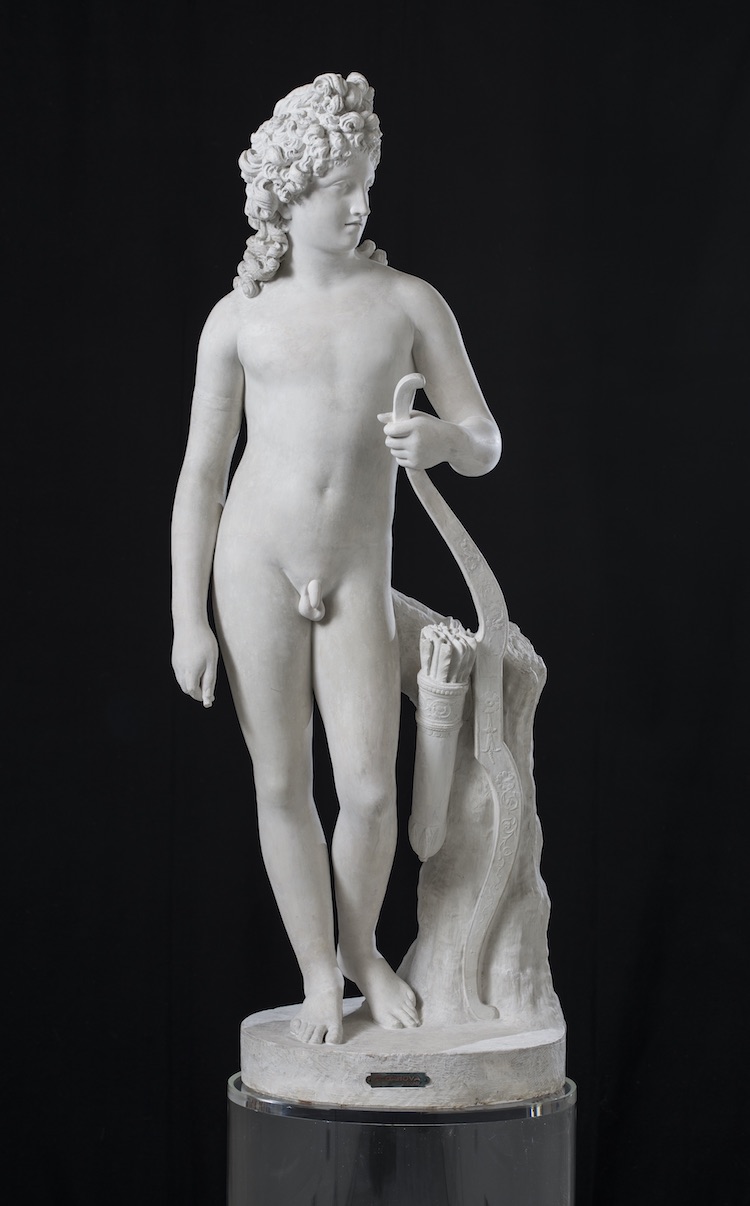For the first time at the Museo Archeologico Nazionale di Napoli, an amazing exhibition featuring 12 large marble sculptures and over 110 works by the genius that was, Antonio Canova.
“The last of the ancients and the first of the moderns”: a definition that well befits the supreme Antonio Canova and his sublime art, celebrated for the first time in Naples with an extraordinary exhibition at the MANN-National Archaeological Museum. The exhibition runs from March 28th to June 30th 2019, and was created in collaboration with Ermitage Italia. It is co-promoted by the Mibac-National Archaeological Museum of Naples and the State Hermitage Museum in St. Petersburg as part of an important collaboration protocol that links the two institutions.
The exhibition has also received the support of the Campania Region, the patronages of the Municipality of Naples, the Gypsotheca-Antonio Canova Museum of Possagno, and the Civic Museum of Bassano del Grappa.
For the first time, the focus of the exhibition is that of the continuous relationship,
intense and fruitful, that linked Canova to the classical world, but we also see an artist renewing the Old by looking at nature.

“Imitate, do not copy the ancients” to “become inimitable” warned Winckelmann, the father of neoclassicism, a warning heeded by Canova throughout the course of his artistic activity. From the early Theseus and the Minotaur to the Sleeping Endimion, finished shortly before his death, the Ancient / Modern dialogue is an inalienable constant.
“The National Archaeological Museum of Naples, where the great Canovian statue of Ferdinand IV of Bourbon is located” – explains its director Paolo Giulierini – it was the ideal place to hold an exhibition that took into account this prolonged dialogue between the great Canova and classical art”.
Here masterpieces admired by the Venetian master are preserved: ‘ercolanesi’ paintings and sculptures that he saw during his first stay in the city in 1780; the Farnese marbles, moved from the Farnese palace in Rome to Naples at the behest of King Ferdinand IV, that were the inspiration for major works by Canova, such as Amore Farnese.

Curated by Giuseppe Pavanello, one of the greatest scholars of Canova, and organised by Villaggio Globale International, the exhibition will feature large scale models and plaster casts, bas-reliefs, plaster and terracotta models, drawings, paintings, and monochromes. There will also be six marbles on loan from the Hermitage of St. Petersburg, which boasts the largest collection of works by Canova in the world – The Winged Amorino, L’Ebe, The Dancer with her hands on her hips, Love and Standing Psyche, the head of the Genius of Death, and the famous and revolutionary sculpture of the Three Graces (pictured above) – but also the impressive three metre high statue Peace from Kiev, and Apollo Crowning Himself from the Los Angeles Getty Museum.
Alongside these gems in the Meridian Hall of the Museo Archeologico Nazionale di Napoli are other marble masterpieces that have thrilled writers such as Stendhal and Foscolo, including the beautiful Penitent Magdalene from Genoa, the Paris from the Civic Museum of Asolo, and the Stele Mellerio, an incomparable vertex of formal rarefaction and pathos. Some of the very delicate large plasters on show include the aforementioned Theseus and the Minotaur and Sleeping Endimion from the Gypsotheca of Possagno (birthplace of Canova), and on loan from private collections Amorino Campbell (pictured below), and Perseus Triumphant from the Palazzo Papafava in Padua, specially restored for the exhibition.

Canova e l’Antico at Museo Archeologico Nazionale di Napoli runs from 28th March to 30th June 2019
![]()
Photo Credits:
Lead image – Antonio Canova
Fauno e baccante abbracciati (Amore e Psiche che si abbracciano), 1787
bozzetto in terracotta, cm 20 x 29,5 x 13,5
Possagno, Gypsotheca e Museo Antonio Canova
Le grazie
affresco, cm 47 x 53
da Pompei, Casa di Titus Dentatius Panthera Napoli, Museo Archeologico Nazionale
Antonio Canova
Amorino (Amorino Campbell), 1787 – 1789
gesso, cm 48 x 54 x 142
Roma, Collezione privata


Leave a Reply